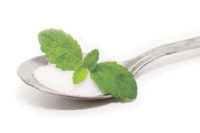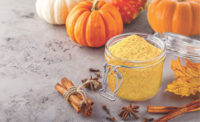Ironically, confectioners use both and will continue to do so for most of their products. Nonetheless, there is a growing movement among consumers and food activist groups to reduce overall sugar consumption.
A Center for Disease Control study, Consumption of Added Sugars Among U.S. Adults, 2005-2010, reports, “Recent analyses indicate that children and adolescents obtain approximately 16 percent of their total caloric intake from added sugars.”
The recommendations set forth in the Dietary Guidelines for Americans, 2010 state that discretionary calories, including both added sugars and solid fats, should be limited to 5 percent to 15 percent per day.
So yes, there is a movement toward sugar reduction, and it’s making itself felt in the confectionery sector.
“Absolutely, the trend toward healthier products in the food industry in general has driven the demand in the confectionery segment to develop healthier alternatives, which are either sugar-free or reduced-sugar,” says Ricardo Rodriguez, Ingredion Inc.’s confectionery marketing manager.
“There has been increased interest in our line of polyols (Maltisweet brand) that can deliver both sugar-free and reduced sugar in confectionery products,” Rodriguez continues. “Our polyols offer a very close match to standard sugars and corn syrups that are used in terms of functionality, taste and sweetness.”
Not only is there more interest in sugar-free and/or reduced sugar, there’s also increased demand for natural sweeteners, such stevia.
“We are seeing an increased interest in using natural sweeteners like our ENLITEN Reb a stevia,” says Rodriguez. “Globally, there has been a steady increase in products launched with a natural claim, from 2008-2013 there has been an increase from 8-12 percent. Although not new, stevia is the sweetener of choice when it comes to naturally sweetening chocolate, candy, and other delicious treats.”
There’s also another reason confectioners might want to consider alternative sweeteners: the ability to enhance nutrition profiles.
“We are also seeing an increased demand for value added or more functional ingredients, with fiber being one of them,” says Rodriguez. “ Ingredion has a portfolio of nutrional products, which includes NUTRAFLORA a prebiotic fiber soluble fiber, and AQUAMIN a natural calcified mineral source that can provide various health benefits/claims (bone health/mineralization, multi-mineral complex & bioavailability).
“These products work synergistically with ENLITEN to produce a more round sweetness profile,” he explains. “In addition we have a delivery systems portfolio that includes products that can help deliver functional and stable ingredients in confections like: vitamins, actives, nutrients and flavors.”
But, it’s up to the confectionery industry to step up and meet the growing demands for healthier products, Rodriguez argues.
“In North America the confectionery segment has faced increased competition from the snack industry,” he says, “which is producing healthier alternatives that crossover into the confectionery segment; therefore companies need to react to consumer needs before losing valuable market/brand shares.”




